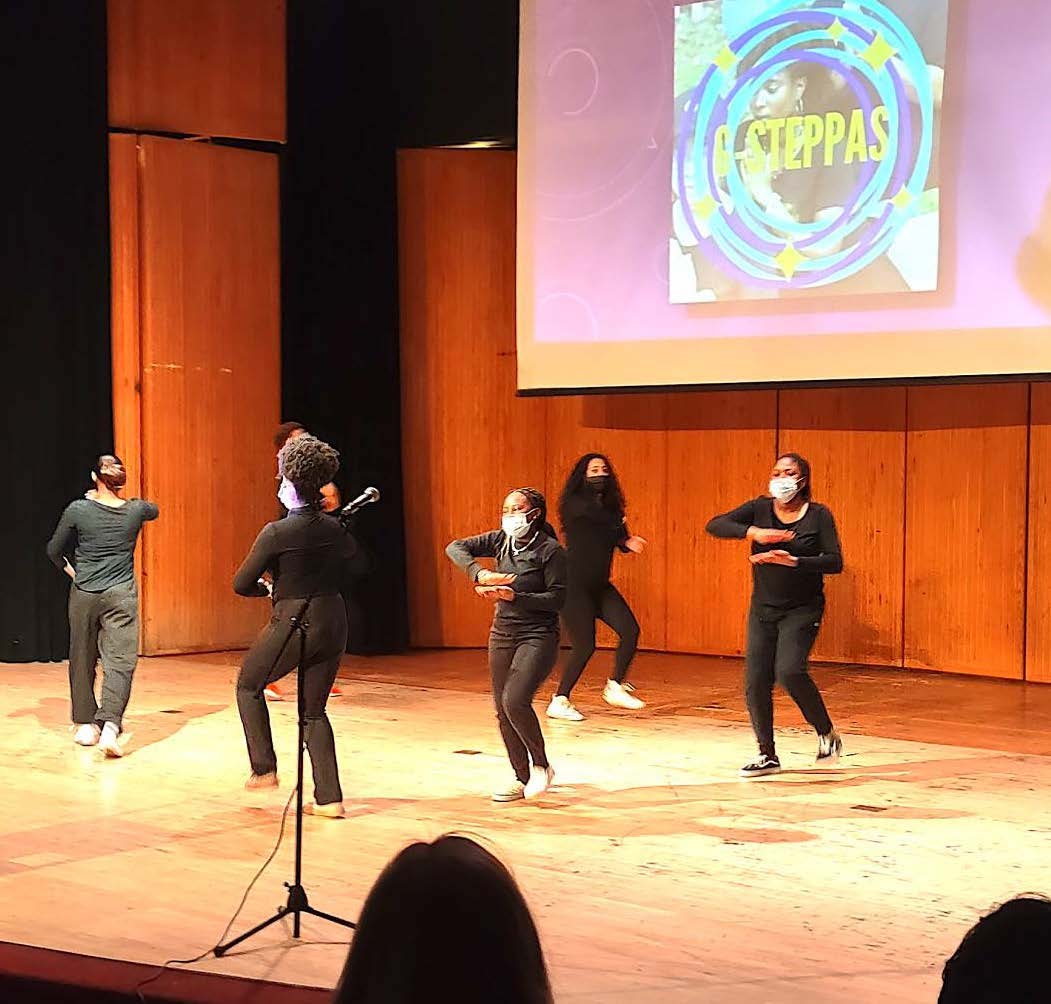|
Back to Success Stories
Why 21?
Hosted by:
Geneseo Healthy Campus and Community Coalition

Please briefly describe your Communities Talk activity.
We held an evening event at the local K–12 school auditorium. The event was entirely created and presented by students from the State University of New York (SUNY) College at Geneseo. It opened with a performance by an a cappella vocal group, Exit 8, followed by a performance by the G-Steppas Step Dance Team. After these performances, six SUNY students presented their research, illustrating ways in which underage and high-risk drinking, and other drug use, can deter or derail one’s potential. The presentations covered the effects of drinking on the brain and cognitive development, effects of alcohol on athletic performance, THC and cognitive functioning, social determinants of youth substance use, and what happens when first responders encounter a student who has overdosed on alcohol. The event was recorded to present to students at an assembly, and to post on the school's and our campus-community coalition's Facebook pages.

How does alcohol and other drug misuse affect your community?

Geneseo, NY, is a village of about 6,000 residents and 5,000 college students. In 2003, members of the college and community came together to address problems related to student substance use, forming the Geneseo Healthy Campus and Community Coalition. The coalition is still active today, with over 100 members representing all sectors of the community and college. We have seen a dramatic decrease in drinking-related problems over the years, although off-campus parties are still a concern, particularly when underage students are present. The village passed a Social Host Ordinance five years ago that provides local law enforcement with an additional tool to address the underage drinking issue. We survey students at the local middle school and high school and at the college every two years on substance use and norms, and can share that data, as we did at the town hall meeting.

What goal(s) did you hope to accomplish with your Communities Talk activity?
- Reduce prevalence of underage drinking and other substances in community
- Create an ongoing conversation about underage drinking and substance use prevention in the community
- Foster collaboration between community stakeholders for continued underage drinking and substance use prevention activities
- Create new resources/materials (e.g., publications, handouts, factsheets, videos, graphics) to support prevention of underage drinking and misuse of other substances
- Awareness and enforcement of social host laws) to support prevention of underage drinking
- Have college students serve as positive role models to local middle and high school students and their families.

What challenge(s) did you face in planning your activity this year?
- The greatest challenge in providing AOD prevention programming in our community was getting families to attend. The evening of our event was heavily scheduled with athletic events, which drew away a large potential audience.

How did you overcome these challenges?
We simulcast and recorded the event, so that hopefully some families and community members would check it out later.

What are your next steps?
- Host follow-up meetings or activities
- Expand our coalition with new partnerships in the community
- Conduct research efforts to learn more about issues in our community
- Create a public education campaign to raise awareness and/or change behaviors around underage drinking (i.e., create PSAs and other promotional materials)
- Continue to build the partnership between the college, community coalition and local school district.

Which Communities Talk resources (or other SAMHSA resources) were most helpful for your activity?
- Communities Talk website
- Communities Talk planning guides
- Communities Talk toolkits
- These resources helped us to conceive of and shape our program.

Who did you involve in your activity planning, and who did your activity impact?
A college student, Alcohol and Other Drug (AOD) interns, and a student who is a first responder planned, researched, and presented the program. Other college students provided the entertainment. We worked with the local middle school and high school principals and media specialists to publicize the program to our target audience (i.e., middle school students, high school students, and their parents/guardians). We also publicized the event through local news media, campus event postings, and the coalition, to bring in college and community residents.

Did the COVID-19 pandemic affect the planning or execution of your activities?
Probably – we think part of the reason for a low in-person turnout was the dramatic local resurgence of COVID-19. We simulcast the program to encourage families to attend from home.
|
|